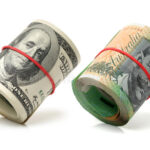Japanese yen Under Pressure BoJ Policy Bets Intensify as Japanese Inflation Heats Up
The Japanese Yen (JPY) extended its rally on Friday, driven by stronger-than-expected inflation data that reinforced market expectations for further interest rate hikes from the Bank of Japan (BoJ). The latest figures from the Japan Statistics Bureau showed the National Consumer Price Index (CPI) rose by 3.6% year-on-year in April, a notable increase from 2.7% in March. This marks the fastest pace of price growth in several months, signaling that Japan’s disinflationary era may truly be behind it.
In particular, the core CPI, which strips out volatile fresh food prices, jumped to 3.5% YoY, outpacing both the 3.2% print in March and the 3.4% consensus forecast. Even more crucially, the core-core CPI—a metric excluding both fresh food and energy and closely watched by the BoJ—climbed to 3%, up from 2.9%. This marks a continued upward trajectory, suggesting sustained underlying inflation.
The data cemented the view that the BoJ poised to gradually normalize its ultra-loose monetary policy stance. Recent comments from BoJ officials indicate a readiness to hike rates further should economic conditions warrant. Traders are now pricing in another BoJ rate increase by September, fueling bullish sentiment for the Japanese Yen.
USD Struggles on Fiscal Woes, Dovish Fed Bets, and Trade Tensions
While the Yen buoyed by domestic economic strength, the US Dollar (USD) remained under pressure due to a mix of domestic and international concerns. One of the key drivers weakening the greenback is growing unease over US fiscal sustainability. The House of Representatives recently passed President Donald Trump’s expansive “One Big, Beautiful Bill”, a sweeping tax cut and spending proposal that is now headed to the Senate.
If enacted, the bill could significantly widen the US budget deficit, already projected to surpass $1.7 trillion in fiscal year 2025. Fears of increased government borrowing and deteriorating fiscal discipline are weighing on investor confidence in the USD.
At the same time, the market is leaning towards further interest rate cuts by the Federal Reserve. Following last week’s softer-than-expected CPI and PPI reports, the probability of another rate cut by December has risen sharply. As inflationary pressures in the US ease and economic momentum appears to be moderating, Fed policymakers may be compelled to lower rates in the latter half of 2025.
Renewed US-China Tensions Undermine the Dollar
Geopolitical factors are also playing a role in the USD’s recent weakness. Tensions between the United States and China have flared up once again, this time over the Biden administration’s export restrictions targeting Chinese tech giant Huawei. In response, China’s Commerce Ministry has threatened legal action against individuals and companies enforcing the ban on AI chip exports, signaling a potential re-escalation in the trade war.
Despite a preliminary trade agreement reached earlier this month in Geneva, the fresh rhetoric has revived investor fears of an economic decoupling between the world’s two largest economies. Such tensions tend to spook global markets and boost demand for traditional safe-haven assets—most notably the Japanese Yen.
US Data Mixed: Strong PMIs Offset by Downbeat Fiscal and Global Outlook
Economic indicators in the US continue to paint a mixed picture. On one hand, the S&P Global Composite PMI rose to 52.1 in May, up from 50.6, indicating modest expansion. Both the Services PMI (52.3) and Manufacturing PMI (52.3) came in above expectations, suggesting that the economy remains resilient, particularly in the services sector.
Additionally, Initial Jobless Claims declined to 227,000, reflecting a still-sturdy labor market. However, these encouraging data points have failed to lift the US Dollar amid the broader macroeconomic headwinds and Fed rate cut bets. Investors appear to be more focused on the medium-term risks stemming from fiscal excesses and geopolitical instability.
US-Japan Trade Deal Hopes Support the Japanese Yen
Another factor supporting the Yen is renewed optimism over a potential US-Japan trade deal. According to unnamed Japanese government sources, discussions are progressing toward a bilateral agreement focused on industrial goods, autos, and digital services. The prospect of a trade pact is being welcomed by currency markets, as it could stabilize Japan’s export sector and bolster confidence in the Japanese economy.
A trade breakthrough would also ease pressure on the BoJ, providing more flexibility to continue normalizing monetary policy without choking off growth. For now, the anticipation of a successful deal is contributing to the Yen’s strength.
Geopolitical Flashpoints Add Safe-Haven Appeal to Japanese yen
Beyond economic fundamentals, ongoing geopolitical instability is prompting a fresh wave of risk aversion, thereby boosting safe-haven demand for the JPY. The Israeli military’s continued offensive in Gaza, coupled with worsening food aid blockades, is escalating tensions in the Middle East. Meanwhile, reports suggest that Trump has privately informed European leaders that Russian President Vladimir Putin believes he’s winning the war in Ukraine, implying that hostilities are unlikely to end soon.
These developments are driving investors toward lower-risk assets like the Yen, gold, and US Treasuries. As a result, the Japanese currency is outperforming even in the face of rising US yields and modestly upbeat American data.
Market Outlook: USD/JPY Faces More Downside
With the USD/JPY pair now back below the mid-143.00s, technical and fundamental factors suggest that further declines may be in store. The combination of:
- Rising BoJ rate expectations,
- Fiscal concerns in the US,
- Heightened geopolitical risks,
- Weakening USD sentiment,
creates a bearish environment for the USD/JPY pair. Unless upcoming Fed speeches or surprise economic data drastically alter the narrative, the path of least resistance for the pair appears to be to the downside.
Key Levels to Watch
From a technical perspective, immediate support for USD/JPY is seen near 142.80, followed by the 141.90–142.00 zone, which marks the late April low. A sustained break below this region could pave the way for a deeper pullback toward 140.50.
On the flip side, resistance now stacked at the 144.50 level, followed by 145.30. Only a clean break above this range would negate the current bearish momentum and potentially open the door for a short-term reversal.
[faq-schema id=”39657″]









